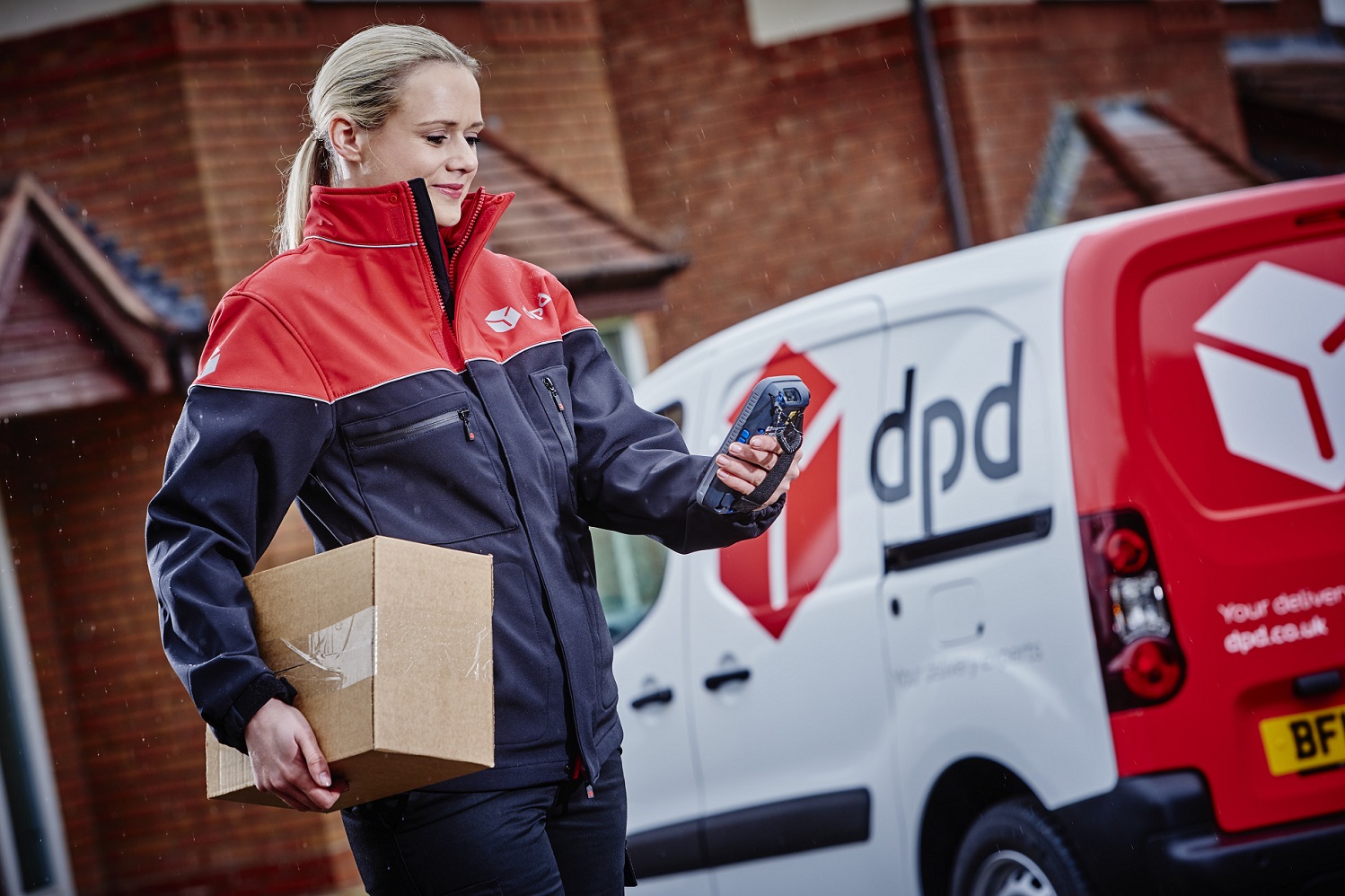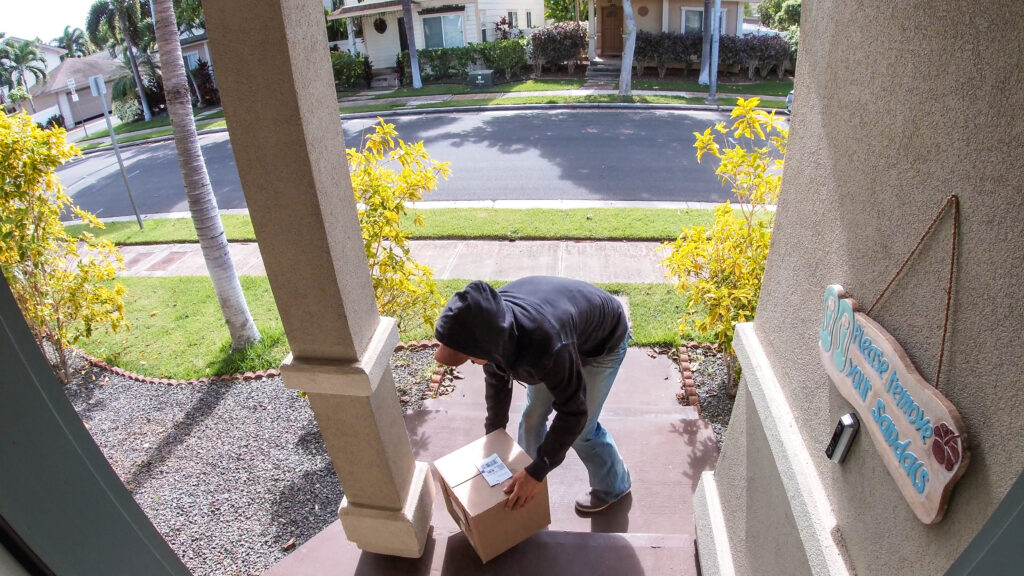In 2022, a global report suggested that nearly one in 10 consumers had suffered parcel theft or loss during a 12-month period, equating to more than one billion packages. According to Penn Elcom’s Global Parcel Theft Report 2022, Canada had the highest rate of parcel loss (17% of the population), followed by Australia (14%) and the US (13%).
All the regions surveyed had experienced a growth in parcel theft or loss between 2021 and 2022, and one-third of consumers reported having a parcel stolen or lost at least once in their lifetime. But it was the UK that saw the biggest increase – up from 7% between May 2020 and April 2021 to 12% for the same period a year later.
After the pandemic, it was assumed that parcel theft and loss rates would fall as shoppers returned to stores. But, according to Rob Platt, sales and marketing director at Penn Elcom, that hasn’t happened. “We were surprised by the volume [of loss and thefts],” he admits. “When we first did the report, we thought we might see a trend of instances of theft and loss going down because of Covid and changing habits; we were surprised by the growth and the number of people that reported that they had an issue.”
In the US, C+R Research produced its first Package Theft Statistics Report in 2021. Unlike the Penn Elcom report, it focuses only on theft rather than including lost packages in the figures too. The 2022 edition revealed that 90% of 2,006 US consumers surveyed said they receive a package delivery at least once a month, and more than half (55%) weekly. Of those respondents, 14% had experienced package theft; for more than two-thirds (67%) it was one package but 22% had had two packages stolen and 11% three or more.
The impact of the cost of living
So why are the figures rising? In part, it’s the scale of the increase in online shopping that has led to a corresponding growth in parcels going missing. Even though deliveries have fallen back from the height of the pandemic, they are still high, placing additional strains on networks.
“With delivery networks getting busier, it’s no surprise that operations can get overwhelmed and parcels can go missing during the final journey,” says Carmen Carey, CEO at Sorted. This can be heightened by potential processing errors, bad weather and staff shortages.
But it’s the increase in theft that is the most worrying trend, and it’s likely to continue as the cost of living crisis takes hold. “During tough economic periods, crime rates have historically risen, and we have certainly entered a tougher economic climate in 2023,” says Gavin Murphy, CMO of Scurri.
The Penn Elcom and C+R Research surveys were both undertaken before the cost of living crisis. But in January 2023, another report – this time from Sorted – suggested that in the UK, nearly three-quarters of consumers think more parcels have been going missing since the economic downturn. “Whether due to a ‘porch pirate’ phenomenon or delivery mishaps, it’s clear that this is a growing issue that has escalated in the past couple of years,” comments Carey.

Implications for retailers, carriers and postal operators
This has worrying implications for already tight budgets as parcel theft and loss can trigger price rises as retailers cover the increasing costs of sending out replacement products. “In the past, retailers and brands would build in a margin to cover a certain percentage of parcel theft or loss,” says Murphy. “In these circumstances, once proof of theft or non-delivery was received, the order would be resent to ensure the inconvenience was put right and the customer was not left out of pocket. Given the value and volume of the e-commerce market, a small but increasing percentage of parcel theft now adds up to a not-insignificant cost to retailers each year. In challenging economic conditions, this impact becomes amplified.”
Rising prices will not be the only thing to potentially put customers off buying online. The issue is affecting consumer and retailer relationships too. The Sorted survey of 1,000 UK consumers also found that 85% of them were either not at all, or only somewhat, confident that online deliveries will arrive on time or undamaged.
Many feel that the companies involved aren’t doing enough. In the C+R Research report in the US, nearly half (48%) of those surveyed said that delivery companies were failing to prevent package thefts; 45% said retailers were failing them too. The impact is significant. “This could lead to lost sales on top of the costs from the theft if shoppers can’t rely on receiving their goods from certain retailers
or delivery companies,” explains Kathleen Blum, vice president of shopper insights at C+R Research.
And it affects more than just the person who hasn’t received their parcel. “In addition, there is an opportunity cost in terms of negative customer reviews, decreased customer loyalty and potential future revenue loss,” explains Murphy.
Platt believes that theft figures are rising because of opportunistic theft, which is a result of financial strains and the fact that parcel theft often has no obvious repercussions, as the product is often simply reshipped by retailers and the police rarely get involved. “It’s low gain but it’s easy to do and is fairly faceless,” he comments. “As consumers, we’ve got used to it. If you don’t receive a parcel, you tell the retailer to ship it again and, because of the fear of bad reviews, they do. So the person that pays for it is the retailer who has to ship the order again.”
The impact on the consumer
But the consumer is also paying, albeit in other ways. According to the Penn Elcom report, one in five (20%) consumers are anxious about parcel theft and 15% fear their parcels will be stolen. Globally, 11% of consumers say they are reluctant to order online because of it. In the UK, that translates into 7,400,000 people worrying their parcels are at risk of being stolen and 4,000,000 reluctant to shop online as a result.
So there are implications for consumers and retailers alike. But parcel theft can damage relationships between consumer and delivery company, and delivery company and retailer too. The Sorted report suggests that nearly half of consumers (47%) say they now always read reviews of delivery experiences before they purchase online. And the impact of mistrust between consumers and courier companies can be significant.
This means that carriers and retailers have to work at putting measures in place to combat the problem. At Evri, which hit the headlines when stolen parcels were found dumped in woodland in the UK before Christmas, the company says theft is rare but that it takes the problem seriously. “We have robust measures in place including technology such as geotagging and safe-place delivery photos,” says a spokesperson.
“As part of our £130m [US$156m] investment, we have expanded our diversion options, so if a customer isn’t in when a delivery is expected, parcels can be diverted to a ParcelShop, locker or neighbor for secure delivery, giving them more control. We have dedicated loss-prevention teams to identify addresses and areas where frequent claims are made, and continue to assess new ways to address this issue.”

The role of communication
Many operators believe that communication is at the heart of solving the problem and encourage consumers to keep a close eye on tracking and sign up for all available alerts. DPDgroup UK’s director of marketing, communications and sustainability, Tim Jones, says that parcel theft is rare because of the communication that recipients receive through the entire delivery phase. “We are talking to them about exactly when we are coming, how they want us to handle their delivery and which safe DPD options they might use. But it is also backed up by a high level of security and tracking at every step of the delivery phase and across the DPD network. For every parcel, we have an end-to-end trail of CCTV, GPS and tracking information right through to the doorstep, and safe-place delivery images,” he explains.
Jones believes the company’s app makes things even easier for consumers and, like Evri, encourages users to make use of safe alternatives such as parcel shops and lockers if they aren’t going to be at home or they are unable to guarantee a safe place.
At Sorted, Carey says the company uses technology that puts being proactive at the center of the delivery experience. This can help identify possible thefts or losses before a customer complains, allowing retailers to take early action. “Retailers receive warnings such as ‘may be missing’, as well as access to all live delivery or returns status updates,” she says.
But such measures cost. “Adding layers to the process comes at a financial cost that will need to be factored in,” says Scurri’s Murphy. But it can be done. “For both carriers and postal operators, retailers may seek
to build in discounts for any repeat delivery run on the back of a stolen or lost parcel delivery, to offset some of the increased cost,” he adds.
Need for consumer engagement
There is an argument that retailers and delivery companies could do more to encourage consumers to make use of the options available to them. “We certainly try to raise awareness with customers, so that they are always thinking about how the parcel will be delivered safely,” comments DPD’s Jones. “We do that through the notifications they receive throughout the delivery phase, where we are updating them on the progress of the parcel, the exact one-hour delivery slot and offering our range of ‘in-flight’ options if they aren’t going to be home. This ensures that customers know exactly when we are coming, there are no ‘surprise’ deliveries and they have plenty of real-time options to divert the parcel, right up to the point that we deliver.”
As well as being more proactive around engaging with delivery alerts and diverting parcels when needed, consumers can consider other ways to protect their parcels, such as video doorbells and secure parcel drop locations.
However, the balance of responsibility is a delicate one and putting too much onus on the consumer can backfire. “Although steps are being taken to deter the crime, many are not foolproof in eliminating the ‘opportunity’ without inconveniencing the shopper, which is a big part of the appeal for online shopping and delivery at home,” says Blum. “Until an effective solution is developed and widely executed that doesn’t inconvenience the shopper, package theft will continue to be an issue.”
Platt believes that although having a variety of solutions to combat theft and loss is important, little will change until someone takes clear ownership. “It might just take one huge retailer or courier in the market to say they won’t own all of this so that there is more emphasis on the consumer to have a safe place. It feels like something has to change. The UK has one of the most generous relationships with customers [in terms of replacing products] so will probably be one of the first to make that change,” he says.
Blum agrees: “This problem needs an industry-wide solution that removes the opportunity for the criminal without inconveniencing the shopper. Therefore, retailers, delivery companies or security companies may be the best option to find a solution. Necessity is the mother of invention, and there is a definite need to solve this problem from a community, retailer, delivery and shopper perspective. There are already some creative, albeit not all logical, solutions out there, so the hope is that a strong solution is on the horizon.”
If not, the implication is clear: continuing increases in business costs, consumer costs and shopper dissatisfaction alongside a decreased level of trust in retailers and delivery companies, and lost sales.
This article was originally published in the March 2023 issue of Parcel and Postal Technology International magazine


